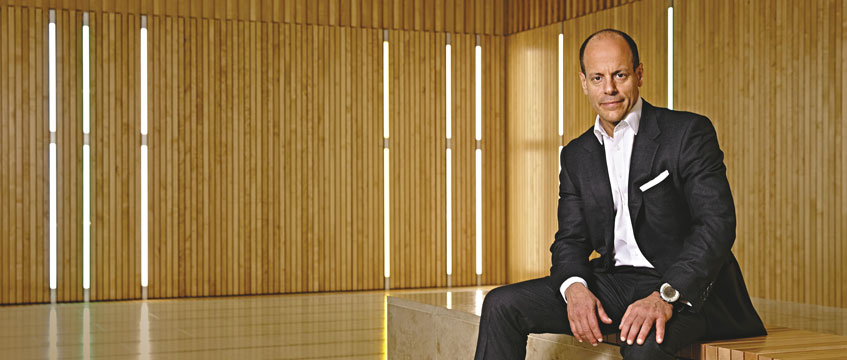Ask Eric Clapton, Ringo Starr, Mick Hucknall, Sir Cliff Richard or Ronan Keating why they live in Surrey, and they will not give high-density flat developments as a reason. Nor will Michael Caine, Colin Montgomerie, Sir Geoff Hurst or the big cheeses of the City who own mansions in what used to be called “Surrey’s stockbroker belt”.
Why should they mention blocks of flats? When they moved to Surrey – in some cases, just a few years ago – the county was renowned for large detached houses offering space and privacy close to London, and at premium prices.
Detached houses have a spectacular history in Surrey. Celebrated architect Sir Edward Lutyens developed a vernacular country style in the late 19th century known for its sweeping roofs, multiple gables and exposed timbers. In the early 1900s, he built several stunning houses just south of Guildford and established a size benchmark that was continued throughout the 20th century.
Since the 1970s, the likes of Kingsway, Fairclough, Bryant, Charles Church, Crest Nicholson, Newley Homes and Octagon have produced opulent houses, many in the same fashion as Lutyens.
Salubrious suburb
Even today, some of the stock is among Britain’s highest valued. One Surrey postcode, KT22, is among Britain’s 10 most expensive, according to sales data held by the Land Registry. It includes Oxshott, Surrey’s most salubrious suburb.
But, thanks to PPG 3 and government housing targets, Surrey’s 21st-century future is likely to be very different.
The South East England regional assembly is advising that up to 640,000 homes should be built in the region over the next 20 years. Between 38,800 and 46,600 of them will be in Surrey – mainly around Guildford, Woking and Redhill – and the county council’s 2004 structure plan makes it clear they are not going to be detached houses.
The introduction to the plan’s housing type and need section says: “Within Surrey, there has been widespread concern that market demand for larger executive-style housing is excluding not only those most in need, but also families who require two or three-bedroom homes. Continuing reductions in household size also suggest that there is a need for more dwellings suited to one and two-person households.”
Planners and developers are promoting high-density schemes with great vigour, says Hugo Stuttaford, Knight Frank’s Guildford land specialist. “We’ve advised on a 0.9ha site previously occupied by the Guildford Advertiser and a print works. There are now going to be 130 apartments built there, which is pretty heavy going by any standard. It’s bringing city-living-style density to Surrey’s county town,” he says.
Classic example
Housebuilders have adapted to the change, but are concerned that the swing has been too severe, says Paul Cooper of Try Homes Southern Region. “Parkview, a development in Caterham, is a classic example. It replaces four detached houses and gardens with 20 properties – 13 apartments, five town houses and two detached houses,” he says.
“There was a time when this sort of site would have been considered for a mixture of detached and semi-detached but, to reach the density requirements in PPG 3, a wider mix had to be considered.”
Cooper believes there is still some potential for detached-only sites, but these tend to be smaller then before and are often at the edge of existing settlements.
“Over the next couple of years, the supply of apartments will exceed demand,” he says. “We’re looking carefully at where we build, focusing on where there’s demand for low-cost properties for first-time buyers, and prime town-centre locations where blocks of apartments are the only option.”
There is substantial evidence that apartment building is now rampant. An EG survey of Surrey’s planning authorities – Spelthorne, Elmbridge, Epsom & Ewell, Reigate and Banstead, Tandridge, Mole Valley, Waverley, Guildford, Woking, Surrey Heath, Runnymede and Croydon – suggests that around 80% of all residential units coming up for planning permission are flats, not houses.
Jonathan Beach, a land specialist at Savills, has more new-build homes on his books than any other Surrey agent. He explains that 80% of the homes he sold during 2000 were detached houses but, in 2004, the proportion was just 10%. “My turnover has gone up too, yet the average price of a property I sold four years ago was £475,000, while last year it was just £287,000. That’s what flats have done to the county,” he says.
There are still large houses being built, but not on new sites, and not in large numbers. “Five or six builders have emerged recently buying old bungalows, knocking them down, then building one-for-one or, more likely, two-for-one or three-for-one houses on the same site. The properties are in huge demand,” says Stuttaford.
There has been a big-city feel to some of Surrey for decades. Sutton, Richmond, Kingston and Croydon in the north of the county are formally parts of Greater London. Now Staines, Woking and Guildford are beginning to adopt a similar character.
“Sometimes PPG 3 can work in the opposite way,” insists Stuttaford. “A developer buys a site and thinks he can build 12 flats on it but, if it’s in a leafy area of Esher, the planners may just say no. They may say go to Woking or to Guildford. But where the developments are already dense, they will become much denser still.” As a result, Surrey’s urban and suburban images will both change over the next decade.
“Even in a busy new-build year, Surrey’s housing stock will increase by 1% at the absolute maximum, so any change is long term,” says Beach. “But we’ll see Woking and Guildford turn into mini-cities in the future and there will be suburban streets elsewhere in Surrey where big houses and blocks of flats are side by side.”
“It’s all change and some will regret it, but look at demand,” he urges. “Prices for large houses are OK, but the real demand is for small homes. How many people really want a five-bedroom house today?”
|
|
|
Known developments include: Guildford: Joint venture developers Westfield Holdings and Hermes have planning permission for a £140m mixed-use scheme. The residential element includes 170 homes, all flats, 30% of them affordable. Work begins in 2006 Camberley: Crest Nicholson and Surrey Heath council are building a mixed-use development on a seven-acre site. This will include 218 homes, all flats, with 55 for key workers. East Croydon: The Gateway site, of 3ha, has rival developers Arrowcroft and Stanhope & Schroders each proposing around 600 homes, all flats, with more than 200 likely to be affordable Central Croydon: Howard Holdings is applying for three separate sites for more than 325 homes, all flats, with around 50% affordable |
|
Source: Colliers CRE |
|
|
|
Surrey’s housing stock of 445,000 homes is still skewed towards large houses, with 64% detached or semis, compared with an all-England figure of less than 50% (source: ODPM). But for how much longer? Detached 34% Semi-detached 30% Terraced 16% Flats 14% Others 6% |
|
Source: Surrey county council (three-yearly update to 2003) |










